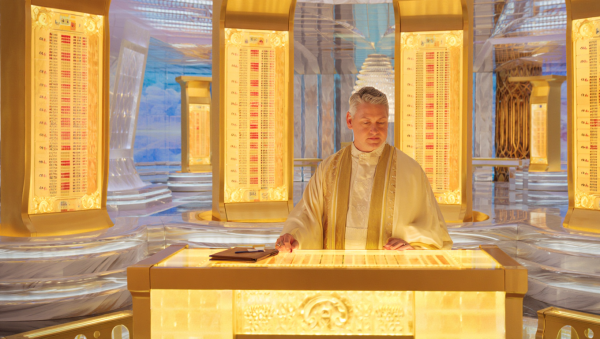
The Headline Hypnosis: When Breaking News Breaks Your Portfolio
The Federal Reserve raises rates by a quarter point, and within minutes every financial news outlet explodes with urgent alerts: “MARKET CRASH IMMINENT,” “RECESSION FEARS MOUNT,” “INVESTORS FLEE TO SAFETY.” Your phone buzzes with notifications, your portfolio app flashes red, and suddenly you’re convinced the world is ending. Meanwhile, the quiet story buried on page six—corporate earnings growth accelerating, unemployment claims dropping, productivity surging—gets ignored completely.
If it bleeds, it leads, and it shapes our trades. This isn’t journalism; it’s attention bias weaponized against your wealth. How does attention bias affect how investors interpret financial news? It turns rational people into reactive traders, transforming carefully planned investment strategies into emotional roller coasters driven by whatever headline screams loudest.
The financial media understands this psychological flaw perfectly. They’ve built entire business models around hijacking your attention with sensational headlines while the real drivers of long-term returns—demographics, productivity, innovation cycles—unfold quietly in the background. Every breaking news alert is designed to make you feel like you need to act immediately, when the best investment action is usually no action at all.
The contrarian truth: the news that demands your attention is rarely the news that deserves it. The stories that will actually affect your retirement are unfolding slowly, quietly, without dramatic headlines or urgent alerts.
The Dopamine Trap of Financial Headlines
Financial news operates on the same psychological triggers as social media: novelty, urgency, fear, and greed. Each breaking news alert delivers a small hit of dopamine followed by anxiety, creating an addiction cycle that keeps you refreshing news feeds instead of focusing on fundamental investment principles.
Consider the 2023 banking crisis. Regional bank failures dominated headlines for weeks, creating panic selling across the entire financial sector. Investors who focused on the attention-grabbing headlines missed the underlying story: the failures were concentrated in poorly managed institutions with specific vulnerabilities, not systemic problems affecting all banks.
Meanwhile, the real banking story—the gradual shift toward digital payment systems, the rise of fintech competition, the changing regulatory landscape—received minimal coverage because it wasn’t dramatic enough to capture attention. Investors who bought quality bank stocks during the headline-driven selloff captured excellent returns, while those who fled based on sensational news missed the opportunity.
The pattern repeats across every sector and every crisis. Attention bias makes us focus on the theatrical while ignoring the structural, the immediate while missing the inevitable.
The AI Hype Cycle: Attention Bias in Real Time
The artificial intelligence boom provides a perfect case study in attention bias distorting investment decisions. Every AI breakthrough, every new ChatGPT feature, every tech company’s AI announcement generates breathless coverage and immediate market reactions. NVIDIA’s stock price fluctuates significantly with each AI-related headline, regardless of whether the news actually impacts the company’s fundamental business prospects.
Investors caught in this attention trap buy AI stocks based on headlines rather than analysis. They chase whatever AI story is trending, ignore valuation metrics, and assume that exciting news equals profitable investments. The result is a market filled with AI companies trading at prices that assume perfection, while genuinely innovative companies working on less headline-worthy applications trade at reasonable valuations.
The contrarian approach requires ignoring the AI hype cycle and focusing on the companies that will actually benefit from AI adoption over the next decade. These are often boring businesses—logistics companies, healthcare providers, financial services firms—that don’t generate exciting headlines but will see real productivity gains from AI implementation.
Attention bias makes investors confuse noise with signal, excitement with opportunity, and headlines with analysis. The companies that will dominate the AI economy are probably not the ones dominating AI headlines.
The Inflation Misdirection Play
Nothing captures attention like inflation headlines. Every monthly Consumer Price Index release generates dramatic coverage, immediate market reactions, and countless predictions about Federal Reserve policy. Investors hang on every inflation data point, adjusting their portfolios based on whether prices rose 3.1% or 3.2% annually.
This attention focus creates a massive blind spot. While everyone obsesses over monthly inflation fluctuations, the real story is structural: demographic changes, productivity shifts, globalization reversal, and energy transition costs. These factors will determine inflation trends over the next decade, but they don’t generate daily headlines.
Investors who adjust their portfolios based on inflation headlines are essentially day-trading based on noise. The monthly inflation data is backward-looking, volatile, and heavily influenced by temporary factors. The structural forces driving long-term inflation trends are predictable but ignored because they don’t generate urgent news alerts.
Smart money ignores inflation headlines and focuses on inflation drivers. They position for energy transition costs, demographic workforce changes, and supply chain regionalization—the boring, predictable forces that will actually determine whether inflation stays elevated or returns to previous levels.
The Earnings Theater vs. Business Reality
Quarterly earnings season perfectly illustrates how attention bias distorts investment decisions. Companies that beat earnings expectations by a penny generate positive headlines and stock price spikes. Companies that miss by a penny face negative coverage and selling pressure. The entire market becomes focused on these short-term results while ignoring the underlying business trends that will determine long-term performance.
This creates systematic mispricing. Companies with strong fundamentals but disappointing quarterly results get oversold. Companies with weak fundamentals but strong quarterly results get overbought. The attention economy rewards short-term performance theater while punishing long-term value creation.
Consider Amazon’s stock performance during various earnings seasons. The company’s stock would swing dramatically based on whether they beat or missed quarterly expectations, even though their fundamental strategy—building infrastructure for long-term dominance—remained unchanged. Investors who focused on earnings headlines missed the structural story that would drive decades of returns.
The contrarian approach treats earnings season as noise and focuses on business quality metrics that don’t generate headlines: customer retention rates, market share trends, competitive positioning, management capital allocation decisions. These factors predict long-term performance but rarely make breaking news.
The Geopolitical Distraction Machine
Geopolitical events generate maximum attention with minimal investment relevance. Every international crisis, every trade war announcement, every diplomatic tension creates headlines that make investing feel like global chess. Investors convince themselves they need to position for geopolitical outcomes, adjusting portfolios based on news that has little bearing on actual business fundamentals.
The Russia-Ukraine conflict provides a perfect example. The initial market reaction was dramatic and attention-grabbing, but the long-term investment implications were predictable and structural: higher energy costs, increased defence spending, supply chain regionalisation, and accelerated renewable energy adoption. Investors who reacted to daily war headlines missed the underlying trends that would reshape entire industries.
Geopolitical attention bias creates two costly mistakes: overreacting to dramatic but temporary events and underreacting to structural changes that unfold slowly. The invasion of Ukraine was a tragedy and a crisis, but it was also an acceleration of trends that were already in motion. Smart investors are positioned for the structural changes rather than trading the headlines.
Most geopolitical news is investment noise disguised as a signal. The events that will actually affect your portfolio are usually predictable demographic, technological, and economic trends that don’t generate breaking news alerts.
The Social Media Amplification Effect
Social media has turbocharged attention bias by creating echo chambers where dramatic financial news gets amplified while nuanced analysis gets ignored. Every market move generates instant commentary, every earnings report triggers immediate reactions, and every Federal Reserve statement spawns thousands of hot takes.
This creates a feedback loop where attention bias becomes self-reinforcing. The most dramatic interpretations of financial news get the most engagement, which makes them seem more credible, which generates more attention, which creates more dramatic interpretations. Meanwhile, measured analysis and long-term perspective get buried in the noise.
The meme stock phenomenon perfectly illustrated this dynamic. Social media attention turned failing companies into cultural battlegrounds, with stock prices driven by viral content rather than business fundamentals. Investors who got caught up in the attention economy confused social media engagement with investment analysis.
Smart investors treat social media as a sentiment indicator rather than an information source. When everyone is paying attention to the same story, it’s usually time to look somewhere else.
Breaking Free from the Attention Economy
Overcoming attention bias requires systematic discipline and contrarian thinking. The first step is recognizing that your natural instincts are wrong: the news that feels most important is usually the least relevant to your long-term investment success.
Create information filters that prioritize signal over noise. Instead of following breaking news, focus on quarterly and annual reports, industry analysis, and long-term trend research. Set specific times for consuming financial news rather than reacting to every alert. Most importantly, develop investment criteria that are independent of current headlines.
The best investors are professional ignorers. They ignore daily market movements, ignore quarterly earnings drama, ignore geopolitical theater, and ignore social media sentiment. They focus on the structural forces that will drive returns over decades, not the temporary events that drive attention over days.
This doesn’t mean becoming uninformed—it means becoming selectively informed. The goal is to identify the 5% of financial news that actually matters to your investments and systematically ignore the 95% that exists purely to capture attention.
The Contrarian’s News Diet
Smart investors consume news differently than the general public. They read annual reports instead of daily headlines, follow industry trends rather than market movements, and focus on management commentary rather than analyst predictions. They understand that the most important investment information is usually the least exciting.
When major news breaks, they ask contrarian questions: What is this headline making me ignore? What structural trends are continuing regardless of this event? How will this story look in five years? What would I do if I couldn’t see daily news for the next month?
The most successful investors often have the most boring news diets. They read trade publications, academic research, and company filings rather than financial news websites. They understand that attention-grabbing information is usually attention-wasting information.
Your portfolio’s performance is inversely correlated with your news consumption. The more you react to financial headlines, the worse your returns become. The less attention you pay to daily drama, the better your long-term results.
Stop checking your portfolio every time news breaks. Start asking what today’s headlines are designed to make you ignore. The future of your wealth depends on paying attention to the right things, not the loud things.
The market rewards patience and punishes attention. Choose accordingly.












